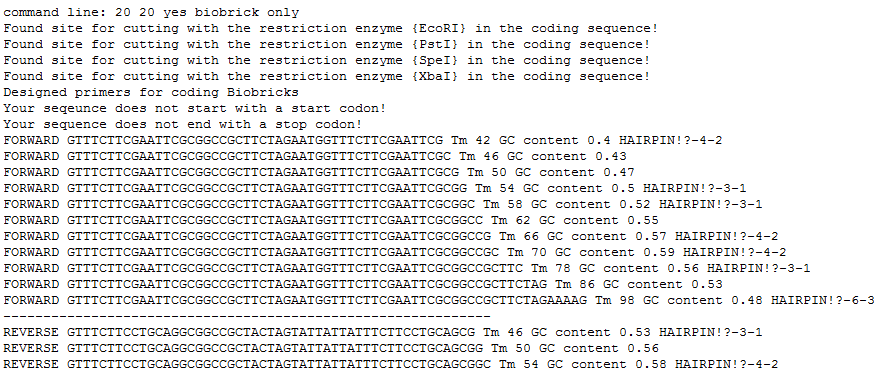Team:Washington/Outreach/iGEM Collaborations
From 2011.igem.org
(→Software Testing) |
(→Software Testing) |
||
| Line 9: | Line 9: | ||
==Software Testing== | ==Software Testing== | ||
| - | We helped LMU-Munich test their primer design software by sending our primer data and comparing it with the output of their automated designer. To do this, we compared the sequences of the primers used to amplify out parts of the LuxBrick with the primers that their software designed and concluded that their software seems to work. | + | We helped LMU-Munich test their primer design software by sending our primer data and comparing it with the output of their automated designer. To do this, we compared the sequences of the primers used to amplify out parts of the LuxBrick with the primers that their software designed and concluded that their software seems to work. We also suggested feedback on other possible features and spotted a few bugs. Unfortunately, we did not have enough time to order the primers that the software designed to test it ourselves. Overall, we found the tool easy to use and potentially very useful for future primer design. |
[[File:Washington_collab_test.png|left|550px|thumb|An example of the output from the tool based off of input from our luxC biobrick, multiple primers with various melting temperatures are given]] | [[File:Washington_collab_test.png|left|550px|thumb|An example of the output from the tool based off of input from our luxC biobrick, multiple primers with various melting temperatures are given]] | ||
Revision as of 23:25, 21 September 2011
Primer Design Tool with LMU-Munich
We worked with LMU-Munich 2011 iGEM team this summer on the testing and development of their PrimerDesign tool. To learn more about it check out their website: Primer Design
Software Testing
We helped LMU-Munich test their primer design software by sending our primer data and comparing it with the output of their automated designer. To do this, we compared the sequences of the primers used to amplify out parts of the LuxBrick with the primers that their software designed and concluded that their software seems to work. We also suggested feedback on other possible features and spotted a few bugs. Unfortunately, we did not have enough time to order the primers that the software designed to test it ourselves. Overall, we found the tool easy to use and potentially very useful for future primer design.
 "
"



